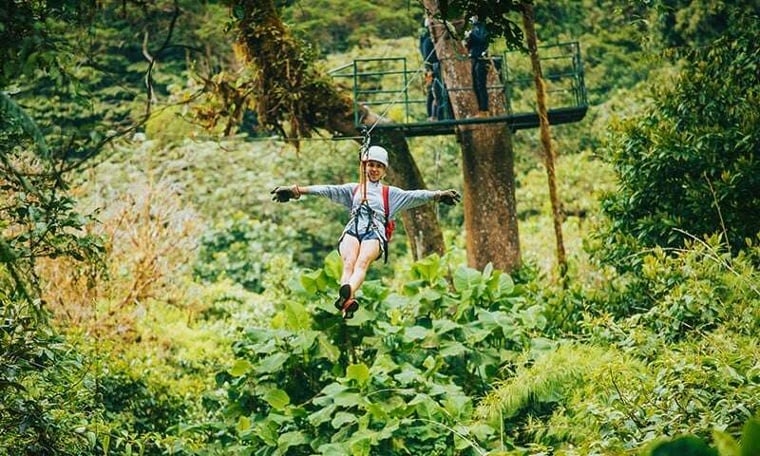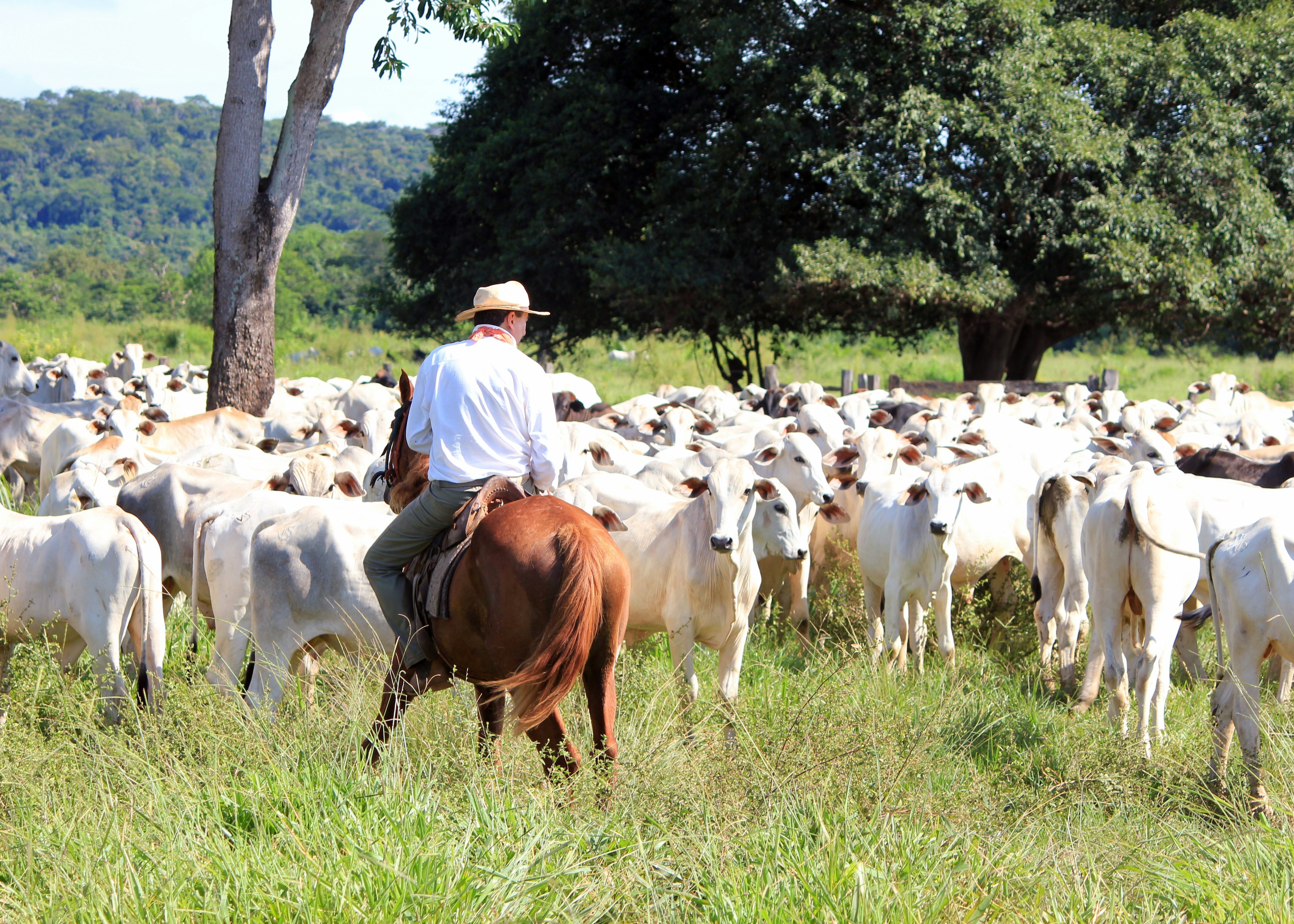Zipline Costa Rica | The History of A Costa Rican Creation

Costa Rica is famous for several things, but when it comes to tourism, canopy ziplines and eco-tourism top the list. I suppose in a way, those two things are connected because ziplining is a way for visitors to enjoy the beauty and grandeur of the forest while leaving the smallest footprints behind.
Even though the country is known for canopy ziplining, many people don’t realize that it was actually invented here way back in 1979. The US biologist that invented it, however, wasn’t thinking about tourism at the time. He was studying the rainforest canopy and needed an easy way to travel amongst the trees!
Donald Perry may have invented it (thank you Donald!), but it was a Canadian entrepreneur who saw its potential for adventure and patented the technology. Darren Hreniuk opened the first canopy zipline in Monteverde in 1997. His attempts to maintain the patent and corner the market were mostly unsuccessful, however, and soon it became a pillar of adventure activities in Costa Rica.
Today millions of tourists arrive in Costa Rica annually, looking for a tropical vacation and the ability to explore a diversity of nature that exists in few other places, and thrills that should be on any Costa Rican travel itinerary!
Fun Facts About Ziplining
- Ziplining actually originated in Ancient China, where the mountainous terrain and wide rivers led residents to search for an easy way to cross wide expanses of land or water quickly and safely. Ziplines were invented, proving to be quick- but not necessarily safe. Eventually, bridges replaced these ancient ziplines and the ziplines fell into disuse…
- Until the Australian military realized its potential during military campaigns. Ziplines were set up and used as a way to send supplies like food, ammunition, and mail quickly and safely into military camps.
- When Donald Perry first started exploring the rainforest canopy, in 1974, he needed a safe and efficient way to study the flora and fauna that he couldn’t see from the ground. Eventually, he discovered that he could use a high-powered crossbow to launch one end of the rope high into the canopy then he would tie the rope between the trees and zip along the rope using his mountaineering skill and equipment. This earned him the nickname “monkey man”.
- 40% of all life on earth exists in what Perry termed the “main level” of the canopy. He spent much of his career studying this unique ecosystem and wrote a book about the subject in 1996, called Life Above the Jungle Floor.
- Donald Perry built the very first zipline in 1979 at Finca La Selva, near the Sarapiqui River using over 1000 feet of rope connected by a series of pulleys.
- Darren Hreniuk approached Perry about partnering in a series of zip lines for tourists, but the scientist wasn’t interested, so Hreniuk went to Monteverde and set up his own. The Original Canopy Tour, as he called it, opened in 1997 and is still running today.
- The highest zipline in the world is located in France at Val Thorens ski resort. The line which soars 820 feet above the ground is at an elevation of 10,600 feet above sea level!
- The longest zipline in the world is located in Ras Al Khaimah, United Arab Emirates, the Jebel Jais Flight holds the Guinness World Record at 1.76 miles long. Those adventurous enough to give it a try can reach speeds of 93 miles an hour. Yikes!
- The longest zipline in Costa Rica comes in at 5220 ft (1590 m) and is part of the Monteverde Canopy Tour.
Why Are Ziplines So Popular?
While many around the world have embraced the adventure inherent in the sport of ziplining, there are others who, perhaps due to a fear of heights, wonder at its widespread appeal.
To be perfectly honest, my own fear of heights made it hard to understand, until the day my youngest daughter decided to face her own fear and dragged me along for the ride. Are we still afraid of heights? Yes. Would I do it again? Definitely, and here is why.
- The experience. There is nowhere else on earth that you can soar so close to the canopy and get a true appreciation of the beauty that it holds- and the sheer size of some of these humongous trees.
- The exhilaration. There are a lot of ways to get your heart pounding and to trigger the burst of adrenaline that only happens when your body goes into ‘fight or flight’ mode. Few of them are as safe as a properly run zipline, thanks to the knowledge that goes into their construction, the regular maintenance that keeps them working properly, and the training that you’re given pre-tour to make sure you use your equipment properly.
- Bragging Rights. That’s right, I said it. Facing your fear and hurling yourself through the air under a tautly strung cable isn’t for everyone. So, those of us that do it earn the right to pat ourselves on the back and tell all of our friends how brave we were!
What To Expect When You Book Your Canopy Tour
Now that you’re all pumped up and ready to brave a Costa Rican Canopy Tour, there are a few things you should know.
The first is that there is no point in taking all sorts of “stuff” with you. Dangling from cables on a harness doesn’t leave a lot of space for purses or extra cameras, and if you drop them along the way- they’re gone forever. Some venues may offer lockers for your gear, but if at all possible, it’s a good idea just to lock it safely in the car out of sight once you have paid your fee. It’s also a great idea to have your keys on a lanyard or attached to a carabiner, and that applies any time you are adventuring in nature.
If you are worried that you won’t be able to prove you did it, don’t. Many of the tours have cameras along the way snapping pics for you. It will cost you a few dollars, but not as much as losing your camera and all your vacation pictures in the jungle. In some cases, you can bring your GoPro and attach it to your helmet, leaving your hands free during the tour.
You should also be aware that there are different parts to a Canopy Tour with a zipline. Their websites will list things like rope bridges, Tarzan swings, hammock bridges(aka hanging bridges), superman ziplines, and rappels. So, let’s take a minute and talk about what each term means.
Obviously, to zipline through the canopy, you have to first get up there. Sometimes this is done gradually through a series of ramps, or rope bridges that are attached to platforms built around the trunks of the trees.
A rope bridge (pictured above) is generally when a series of parallel ropes strung between trees hold wooden slats together. There are ropes to hang onto as you cross, and the bridge will sway gently when you step on it.
A hammock/hanging bridge is similar but the structure is more substantial and they generally have high side railings. They are often used to cross rivers or gullies. They look like this…
A Tarzan swing is exactly what you would expect… swinging on the end of a long rope, except that you are safely clipped in by a harness, and yelling is optional.
Another term that is fairly easy to imagine is the Superman Zipline. While it’s not exactly flying like Superman, it’s about as close as you can get- safely and without superpowers. This is accomplished using a special harness that clips in at your back so that you swing facedown and then glide along below the cable.
Rappelling is done when the rope is running vertically from the top of a cliff or waterfall to the bottom. Climbers clip themselves to the rope using special equipment. It allows them to slide down the rope at their own pace while bracing their feet against the cliff face. In Costa Rica rappelling down waterfalls is a fun way to cool off!
As part of Ocotea Tours & Transfers, we've been providing Monteverde tours and helping people find adventure through ziplining since 2008, and we are happy to give you the benefit of that experience. To learn more about our favorite local zipline or book a tour, click here!





